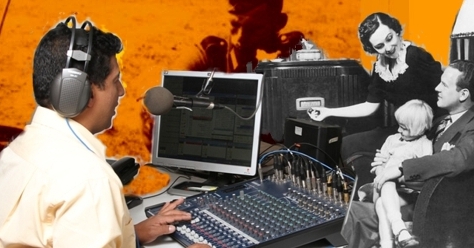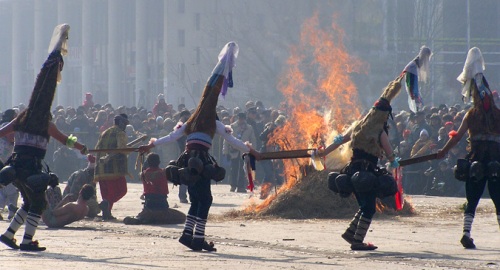Created by the ethnomusicologist David Locke, Dagomba dance-drumming presents sound recordings, staff notation, and text materials on the dance drumming of the Dagomba people of northern Ghana.
The recordings and historical narratives—including a personal narrative of training in drumming—were collected from Alhaji Abubakari Lunna, an expert on Dagomba performing arts and culture. The story of Lunna’s life conveys the scope of the knowledge that a great drummer learns, the way this heritage is transmitted, and a glimpse into the Dagomba drumming scene during the second half of the twentieth century. The website is hosted by Tufts University.
This is the first in our series of posts celebrating Black History Month. Throughout February we will be posting about resources and landmark writings in black studies. Click here or on the Black studies category on the right to see a continuously updated page of links to all of our posts in this category.
Below, an excerpt from a performance of Takai, a Dagomba dance that involves the striking of metal rods in the dancers’ hands and swirling movements that are enhanced by their flaring costumes.
Related post: Traditional Ghanaian sampling







 On the eve of the event, youths go from house to house collecting wood for the ceremonial bonfire. In the morning the participants choose their roles and don the corresponding masks and sheepskin capes. The stock characters may include a groom, a bride, a devil, a priest, a gypsy, and a dancer with a bear. To the accompaniment of drums and shawms, the dancers parade through the village with abundant comical antics. The ceremony culminates with a spirited dance around the collective bonfire.
On the eve of the event, youths go from house to house collecting wood for the ceremonial bonfire. In the morning the participants choose their roles and don the corresponding masks and sheepskin capes. The stock characters may include a groom, a bride, a devil, a priest, a gypsy, and a dancer with a bear. To the accompaniment of drums and shawms, the dancers parade through the village with abundant comical antics. The ceremony culminates with a spirited dance around the collective bonfire.






